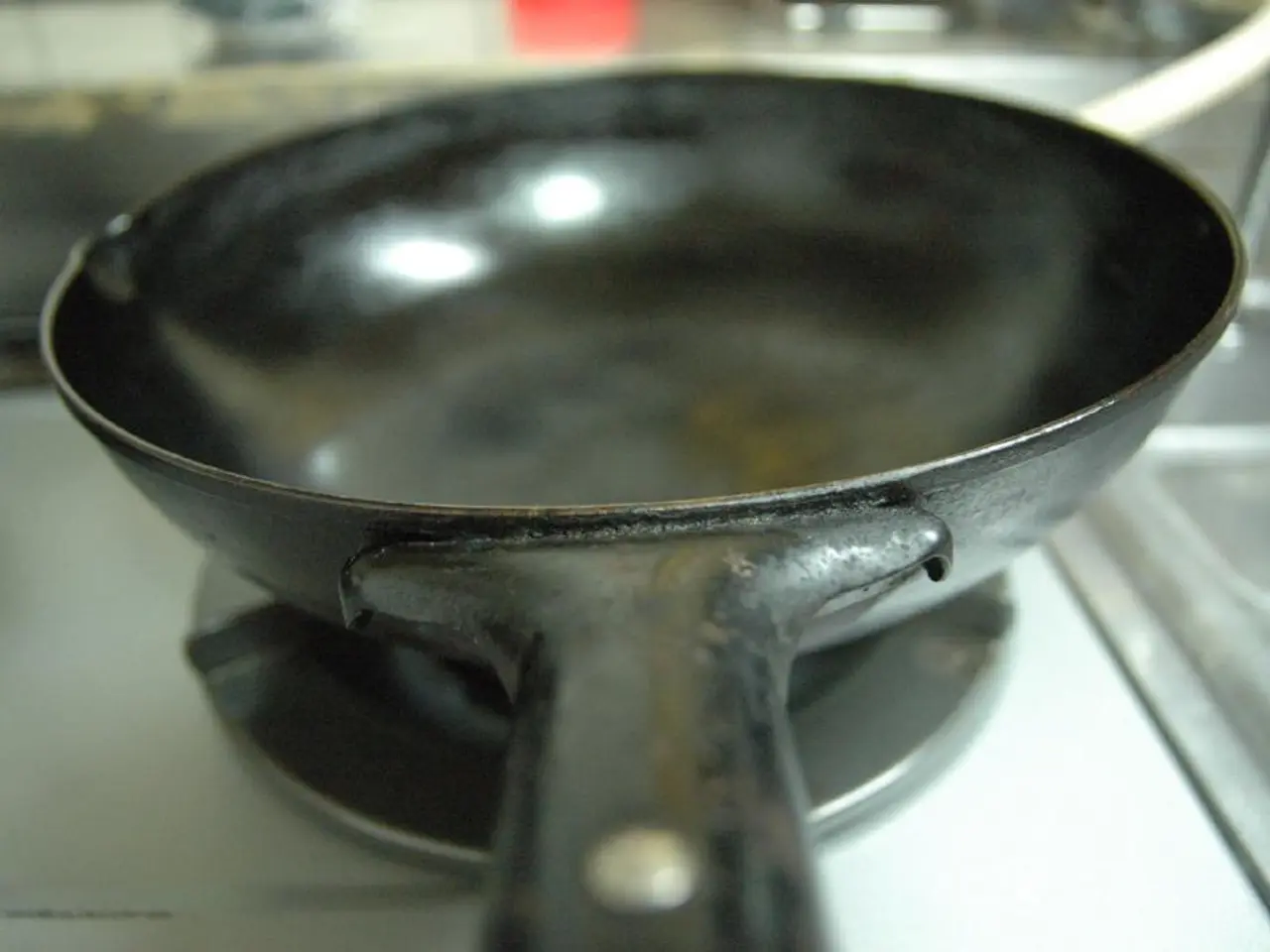Enhanced ceramic material through humidity significantly boosts fuel cell efficiency, study contends
Water Vapor Boosts Efficiency of Fuel Cells Using Ba7Nb4MoO20
Scientists have made a significant breakthrough in the field of fuel cell engineering. A study led by Professor Masatomo Yashima at the Institute of Science, Tokyo, in collaboration with researchers from Imperial College, London, and Kyushu University, has discovered that water vapor can significantly enhance the efficiency of fuel cells using Ba7Nb4MoO20, a promising ceramic electrolyte material.
Ba7Nb4MoO20 is a hexagonal perovskite-related oxide where oxide ions migrate via interstitial sites in an oxygen-deficient layer. When exposed to water vapor, the material absorbs water, increasing the concentration of interstitial oxygen ions and promoting an "interstitialcy diffusion mechanism," thereby enhancing oxide-ion transport and electrical conductivity under humid conditions.
The absorption of water vapor by Ba7Nb4MoO20 increases its ability to conduct electricity. Exposure to water vapor helps create extra oxygen ions that move swiftly through Ba7Nb4MoO20, nearly doubling its efficiency at 932 degrees Fahrenheit (500 degrees Celsius).
The total conductivity of Ba7Nb4MoO20 in humid air (5.3 × 10−4 S/cm) is more than twice as high as in dry air (2.5 × 10−4 S/cm) at the same temperature. This improvement is due to enhanced oxygen-ion mobility from hydration effects, which boosts oxide-ion diffusion through the ceramic electrolyte's structure, resulting in higher ionic conductivity and thus improved fuel cell performance, especially at lower operating temperatures.
This hydration-driven enhancement not only increases power efficiency but may also contribute to more durable, lower-temperature fuel cells by improving ion transport without the need for high temperatures. This represents a promising route for developing advanced fuel cells with better efficiency and longevity.
The study was conducted to understand O2− and H+ conduction in ceramic oxide-ion, proton, and dual-ion conductors. The findings were confirmed experimentally through electromotive force and diffusion measurements comparing dry and wet conditions.
Fuel cells produce clean energy and have been used in space missions to make power and drinking water. However, they typically run at very high temperatures, causing parts to wear out faster. The discovery of Ba7Nb4MoO20 as a highly conductive electrolyte that could potentially be used at lower temperatures addresses a need in the field of fuel cell engineering.
The movement of oxide ions (O2−) in Ba7Nb4MoO20 occurs through interstitial sites in part of its crystal structure with fewer oxygen atoms than normal. The extra oxygen ions absorbed by Ba7Nb4MoO20 form pairs of atoms called (Nb/Mo)2O9 dimers inside the crystal. The breaking and reforming of these dimers allows the oxygen ions to move easily, making the material a better conductor.
The findings of the study were published in the Journal of Materials Chemistry A. This contrasts with typical challenges in many fuel cells where managing liquid water is essential to prevent performance loss, but with Ba7Nb4MoO20, water vapor acts beneficially at the material level rather than causing flooding.
Improving fuel cell efficiency has been a subject of interest for many engineers and researchers due to the need for developing highly conductive electrolytes at lower temperatures. Ba7Nb4MoO20 works even better when exposed to water vapor, making it a promising material for the future of fuel cell technology.
- The study on enhancing fuel cell efficiency, led by Professor Masatomo Yashima, has shown that the material Ba7Nb4MoO20 can improve significantly in electrical conductivity with the absorption of water vapor.
- The energy industry could benefit from the enhancements in fuel cell performance using the ceramic electrolyte material Ba7Nb4MoO20, as it may lead to lower-temperature fuel cells with improved durability.
- The increased electrical conductivity of Ba7Nb4MoO20 due to water vapor absorption contributes to innovation in cybersecurity, as more efficient fuel cells could power next-generation secure computing systems.
- The medical-conditions sector, which relies on reliable power sources for life-saving equipment, could potentially leverage the advancements in fuel cell technology using Ba7Nb4MoO20 for more portable and effective power solutions.
- The findings of the study on the Ba7Nb4MoO20 electrolyte material could contribute to financial savings in the industry as more efficient fuel cells could reduce operational costs.




